Scrivener Royal
THE MANUSCRIPT
“Moralia in Job”
folio 5v and an adaptation of 410v
Biblioteca Nacional de España BNE MSS/80
Monastery of Valeranica (Castile), 945 CE
THE MATERIALS
Pergamenata
Noodler’s Black ink
Monteverde Ruby ink
M Graham gouache in Pyrrol Red, Azo Yellow, Phthalocyanine Blue, Titanium White
Finetec Arabic Gold watercolor
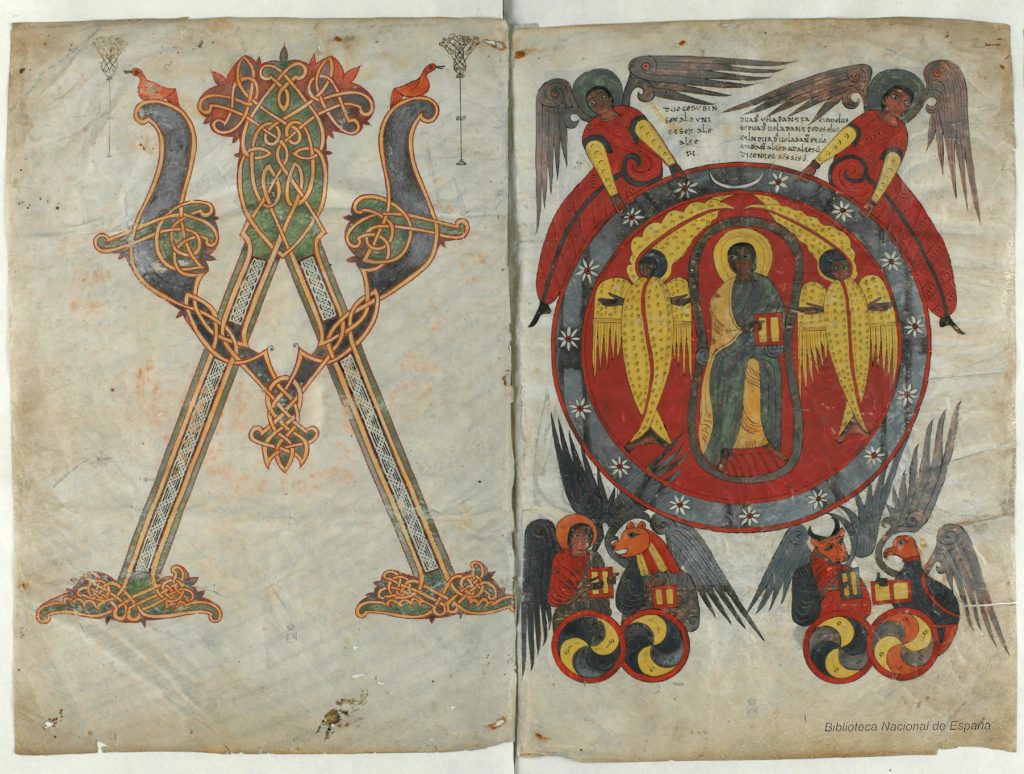
CH-CH-CH-CH-CHANGES
I made a few adaptations to the design due to the scale, available tools, and practicality (i.e., the fact that I’m not a monk, or a master illuminator, or a monk-and-master-illuminator).
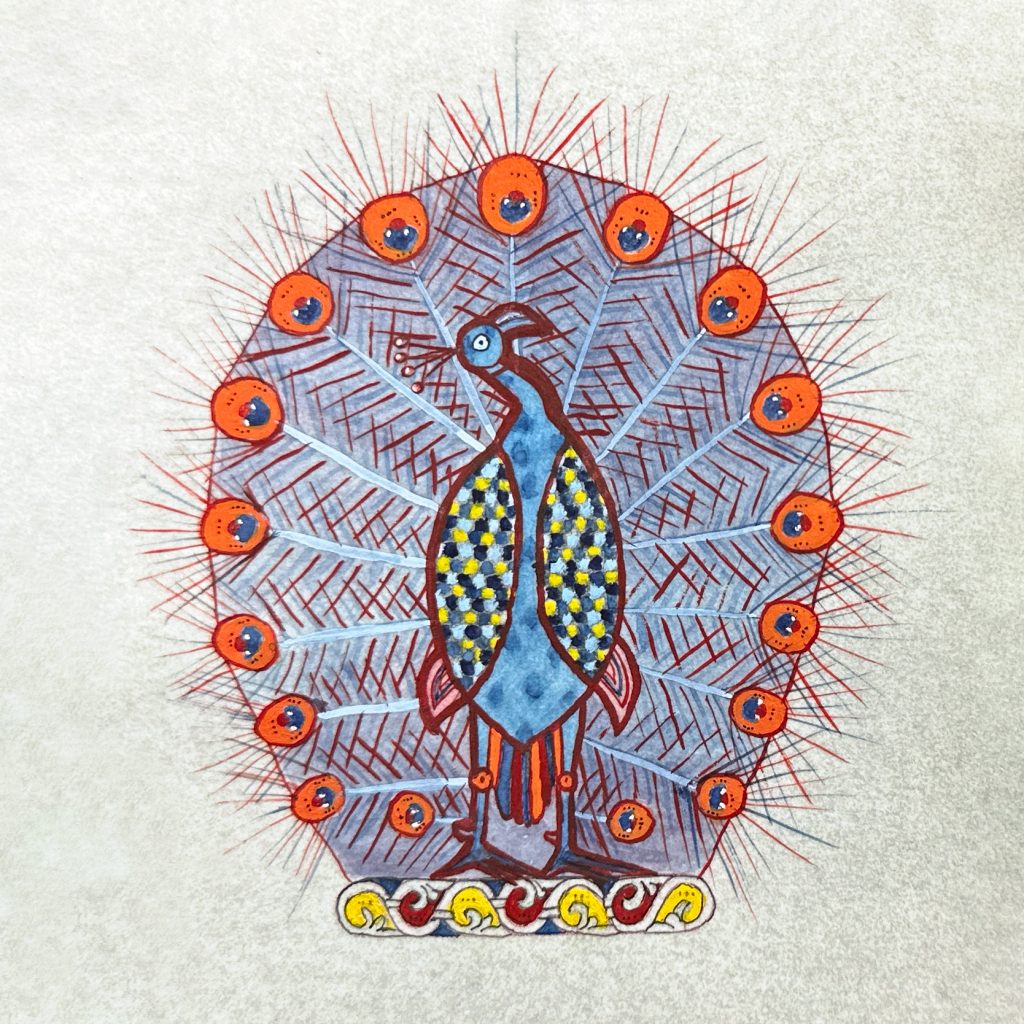
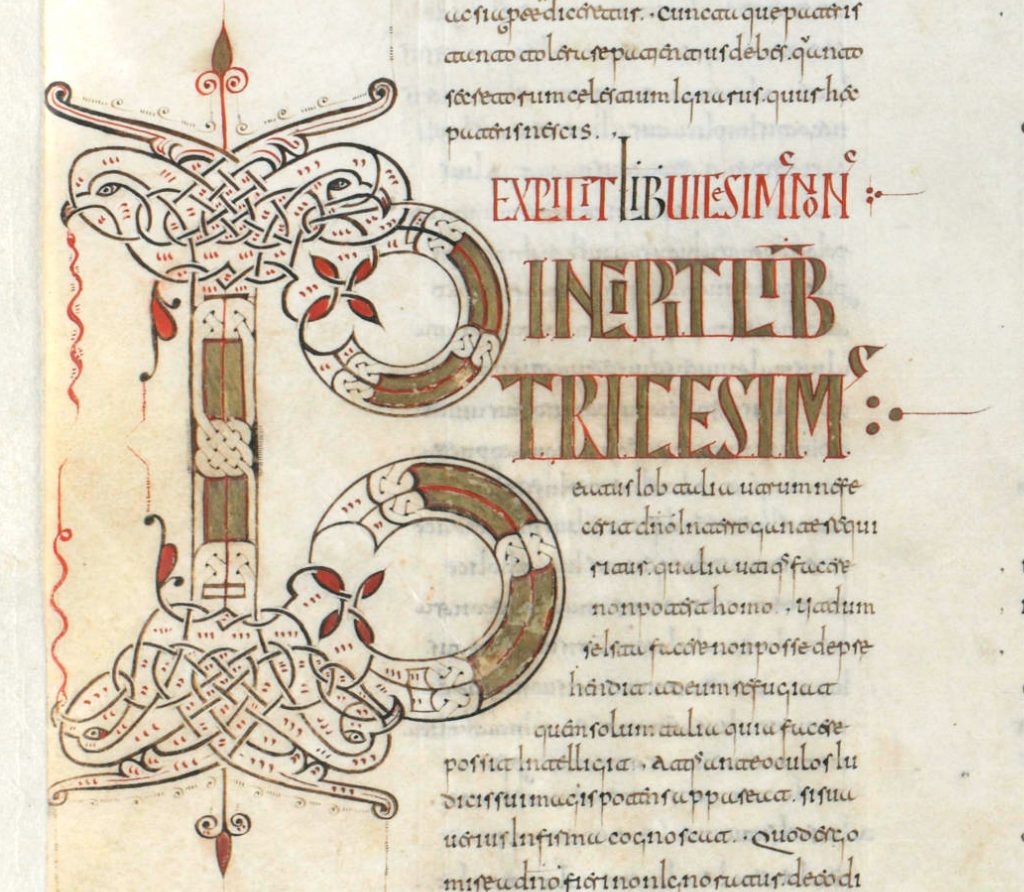
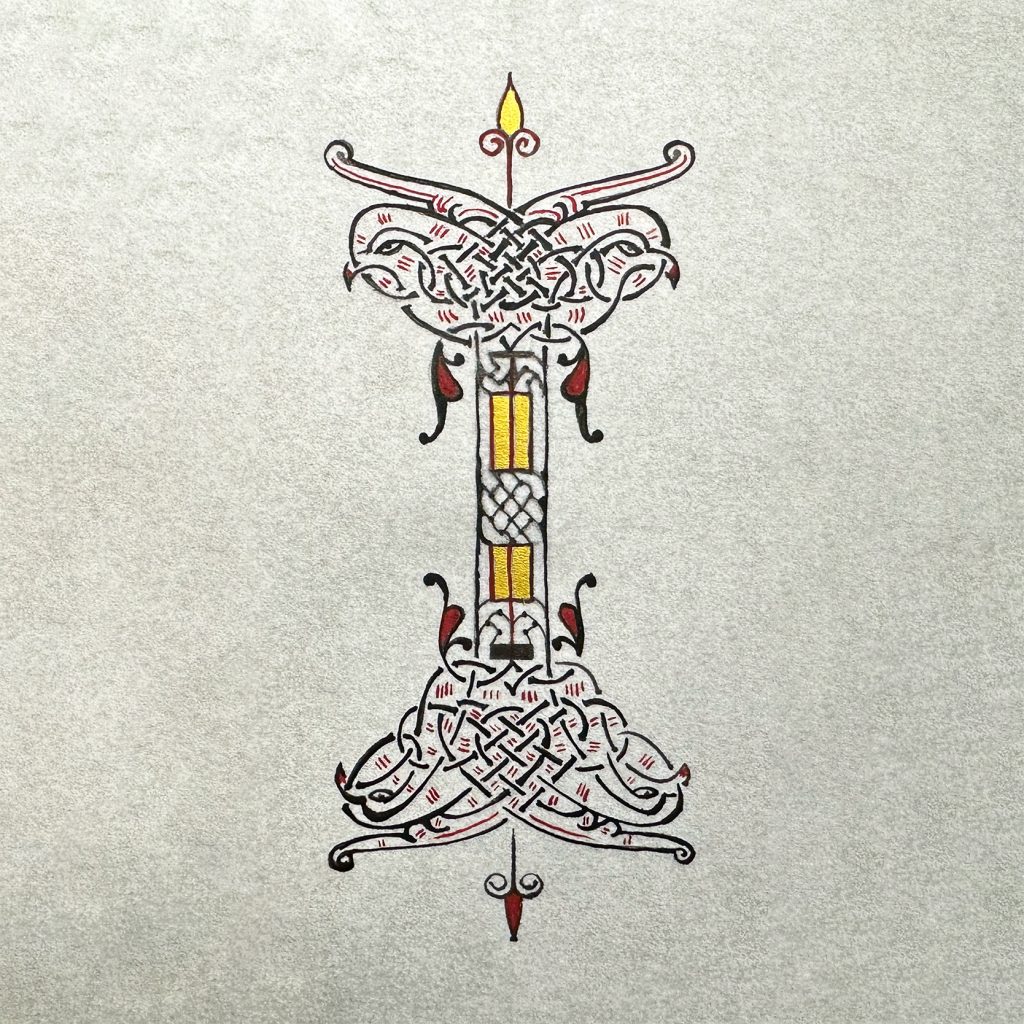
The original peacock takes up the majority of the 49x34cm (19.29×13.39″) page, whereas my peacock is only 4″ tall: a considerable difference which required some choices. For one, I left the body feathers un-outlined, since I lack an instrument fine enough to make a line which wouldn’t cover too much feather color. For another, I changed the width of some of the lines—the outline of the body, for example—to provide enough contrast that it was readable at a much smaller scale.
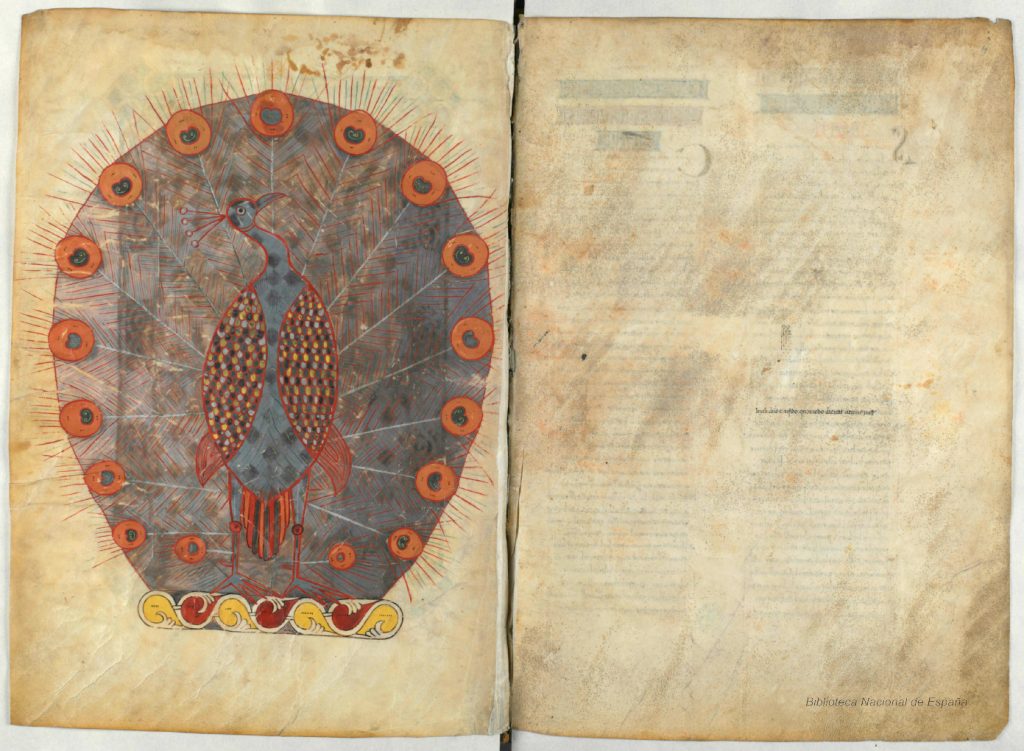
The 1/2″ margin around both illustrations is rather less than the 1.5″ I usually counsel, but with a 5×7 scroll and the inability to know how much text will be needed or how small the calligrapher is used to writing, I optimized for space. (Hopefully it won’t make matting too difficult.)
Overall, my priority was creating an SCA award scroll, not a replica. Even with the tiny choices and changes, the resultant scroll was top of mind.
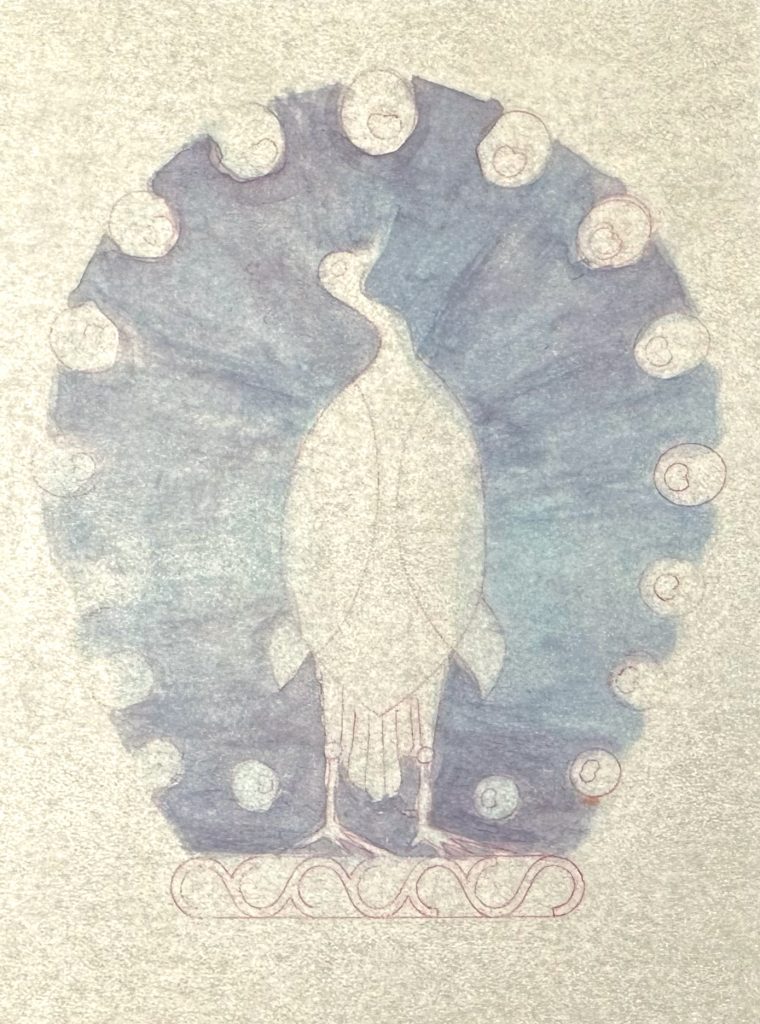
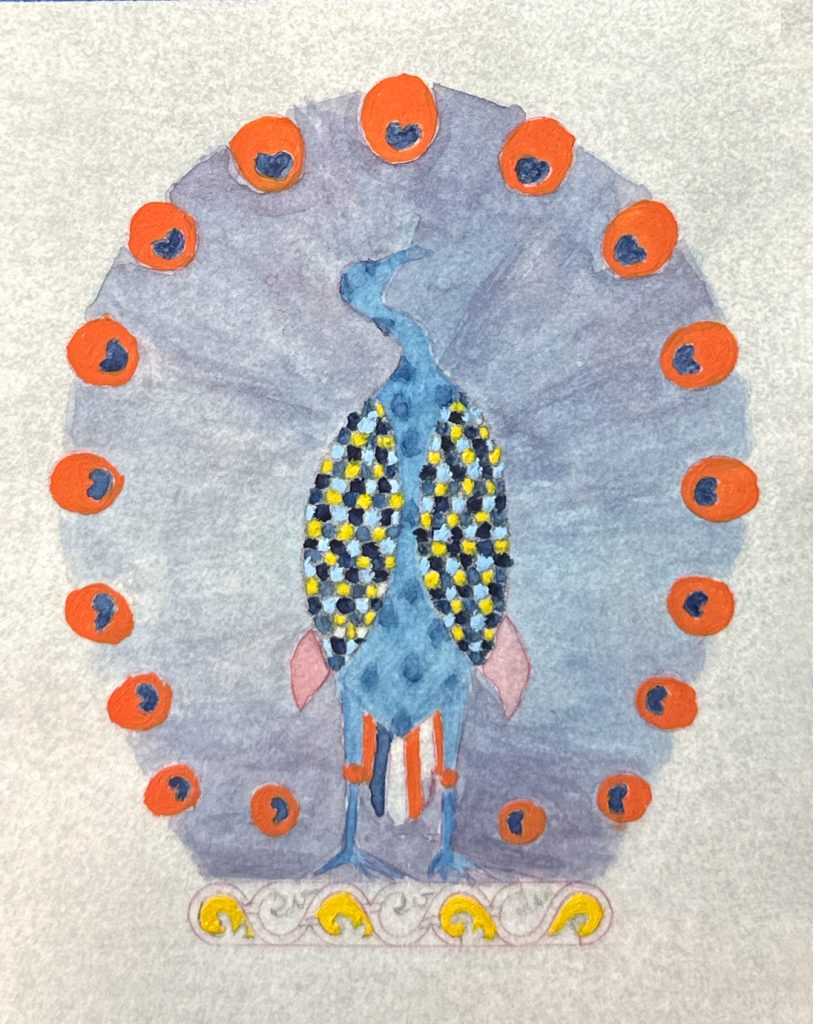
SERVING SUGGESTIONS
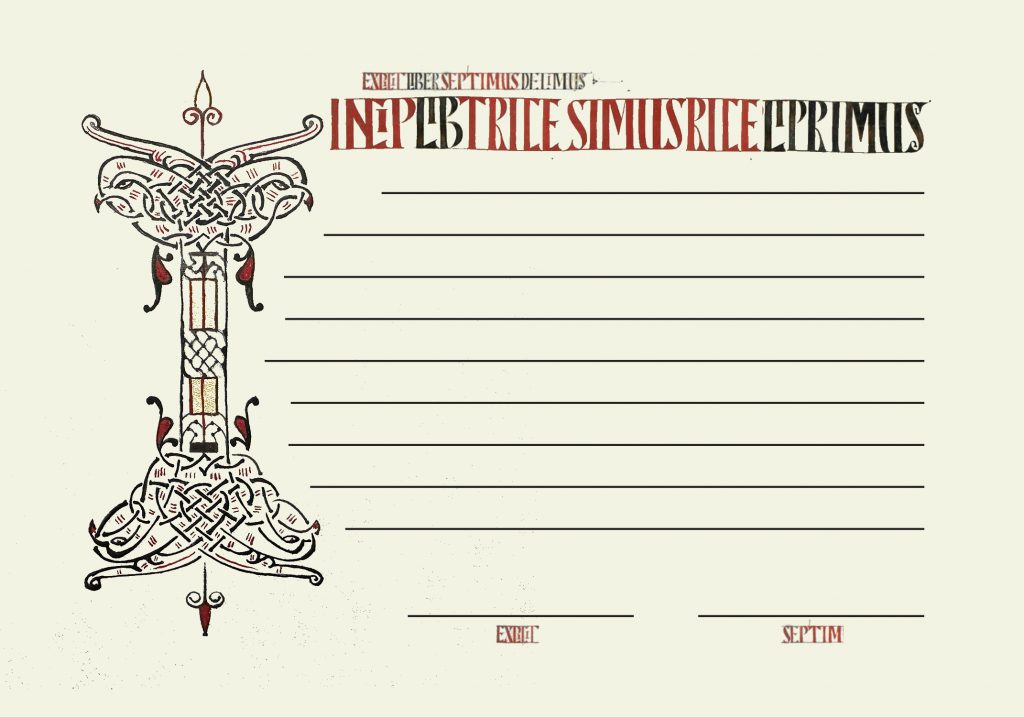
• Based on the design context of the larger initials in this manuscript, if the scroll text allows it I’d suggest the calligrapher consider integrating a headline for the first line, ideally to highlight something that “sounds” louder or more important than the rest of the scroll. Like a call to attention. There are several hierarchy levels of headlines used in this manuscript, only one of which is to the right. The calligrapher can have a field day.
• The script of the manuscript is Visigothic letter. The manuscript is huge at 502 pages, so there is plenty to study to determine their ductus.
• The catalog record states that this manuscript was discussed in, among other places, The Art of the Medieval Spain, AD 500 -1200, New York, Metropolitan Museum of Art, 1993 pp. 161 -162, no. 84. The Met has this and other exhibit catalogs freely available on their website (this one is here), so if they want more context, it’s accessible.
• Two other accessible research resources include:
Harris, Kereese. “From the Divine to the Diabolical: The Peacock in Medieval and Renaissance Art.” Arizona State University, 2016. https://keep.lib.asu.edu/items/155224.
Guilmain, Jacques. “Zoomorphic Decoration and the Problem of the Sources of Mozarabic Illumination.” Speculum 35, no. 1 (January 1, 1960): 17–38. https://doi.org/10.2307/2850173. (Ask me if you want to read this and can’t access it otherwise. I gotchu.)
I fully welcome questions from the calligrapher, and encourage them to reach out to mydwynter at gmail.com if they would like more details or advice on how to best use these illuminations for different kinds of scrolls.
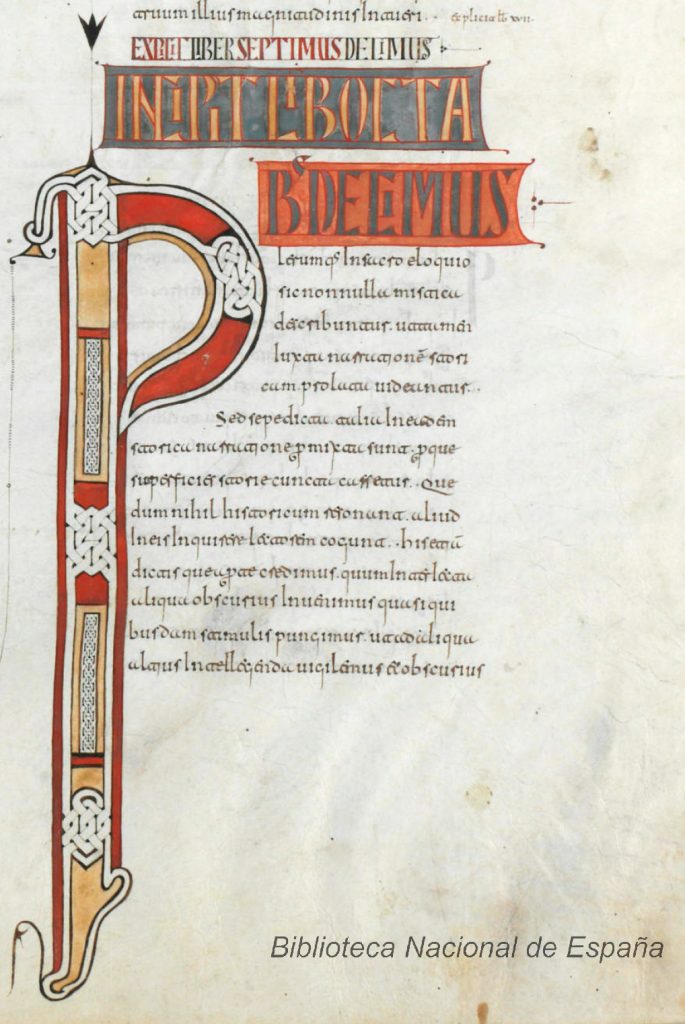
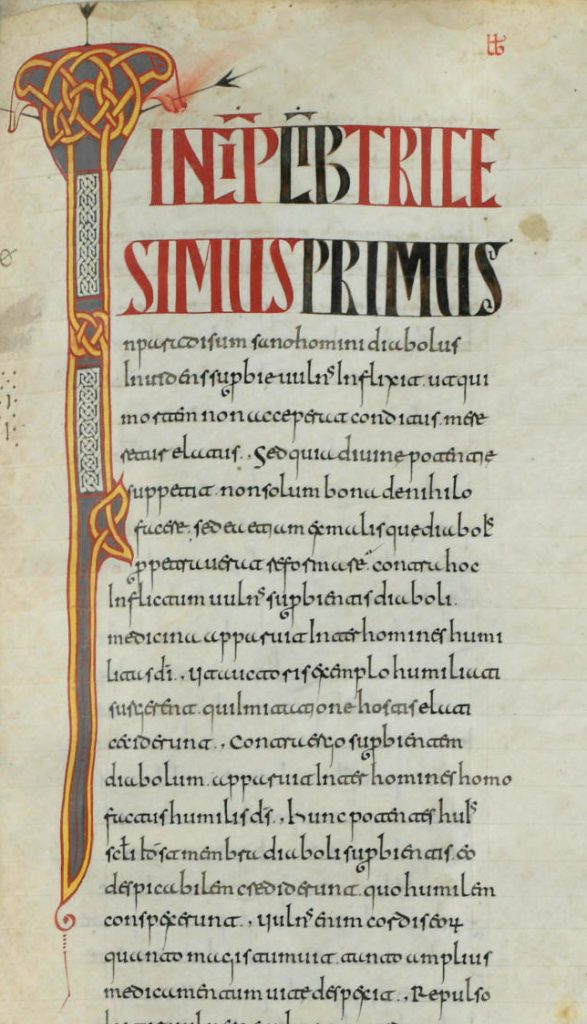
WHY SCRIVENER ROYAL?
As Scrivener Royal, I would see my job as support staff for scribes.
I have already been serving as a sort of “scroll doctor”, with folks asking me for help researching, designing, or troubleshooting their scrolls. It would be very useful to expand that position to the broader population, and give it authority by making it official.
Additionally, over the past few years I’ve spent a lot of time engaged with art history in an academic capacity, which has given me not only broader knowledge, but also greater context of the art we’re using as basis for our own.
I would like to use this knowledge and perspective alongside my training as an artist and designer, and my experience as a scribe, to help folks make the best art they can.
In addition, I have also been eager to help arrange online museum tours and other related activities; many institutions already have programs we could enjoy, and I have contacts at others which might allow us to virtually engage with their collections as well. This would be beneficial not only because we are an education non-profit, but also because good art grows from expanding horizons. (I feel so strongly about this that even if I’m not selected, I would still like to arrange it.)
Research tells me that the position of Scrivener Royal can be whatever we want it to be, and I would love for us to intentionally make it a position of service to support scribes.
Thank you!
-Hlāford Bran Mydwynter
